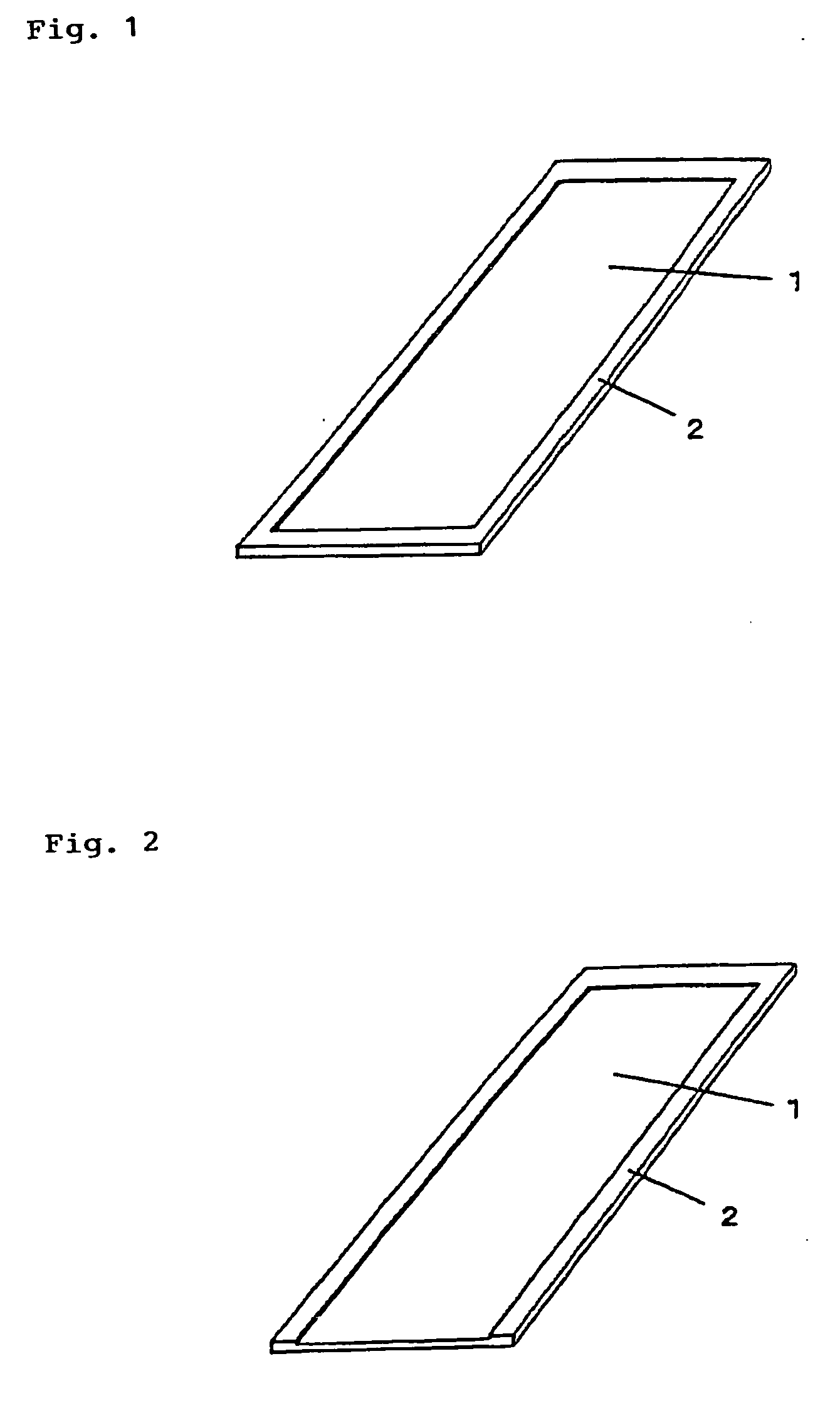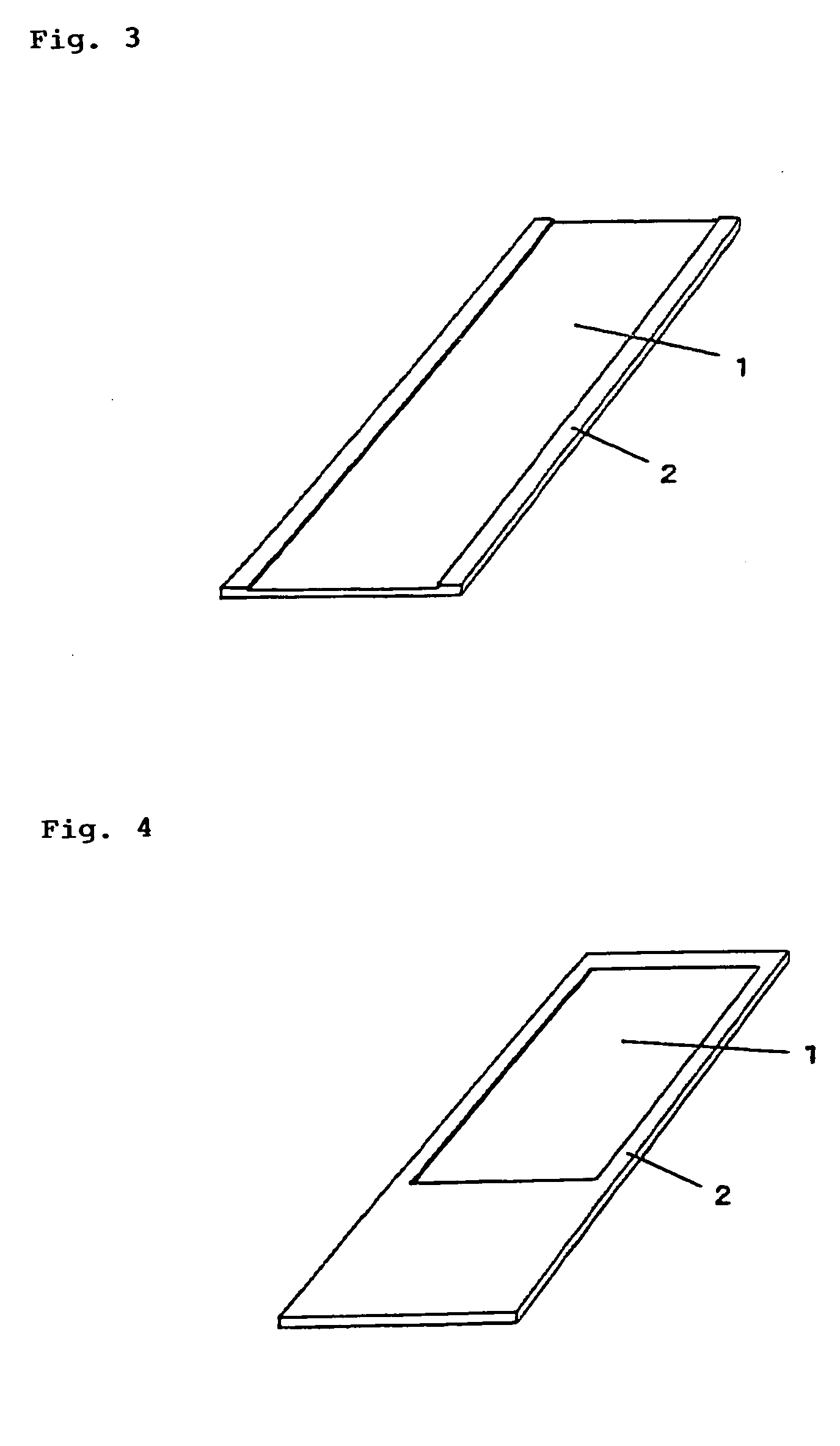Plastic substrate for microchips
a microchip and plastic substrate technology, applied in the field of plastic substrates for microchips, can solve the problems of poor dna immobilization efficiency, poor stability of polylysine after coating, and difficult application of this method to immobilization, etc., to achieve high dna immobilization efficiency, good reproducibility, and the quality of the plastic substrate remains stable.
- Summary
- Abstract
- Description
- Claims
- Application Information
AI Technical Summary
Benefits of technology
Problems solved by technology
Method used
Image
Examples
example 1
[0079] Using a saturated cyclic polyolefin resin (a hydrogenation product of a random copolymer between ethylene and dicyclopentadiene which is a norbornene derivative), slide-glass-shaped substrates were obtained by injection molding. To the surfaces of those molded products, a hydrophilization treatment was applied by low-temperature oxygen plasma treatment. Next, a solution with γ-aminopropytriethoxysilane dissolved as an aminoalkylsilane at 5% concentration in methanol was prepared as a treatment solution for the introduction of amino groups. After the molded products were immersed for 2 hours in the solution, the resulting substrates were taken out of the solution, allowed to stand in ultrapure water, taken out of the ultrapure water, and then dried. Glutaraldehyde was dissolved at 2% concentration in PBS(−) to prepare a glutaraldehyde solution. The substrates which had been subjected to the aminoalkylsilane treatment were immersed in the glutaraldehyde solution. After the subs...
example 2
[0080] The substrates produced in Example 1 were placed in cases for slide glasses. The cases with the substrates placed therein were put in laminated pouches of aluminum and PET. The pouches were sealed, and then, the substrates were stored for 6 months at room temperature.
example 3
[0095] Using the same saturated cyclic polyolefin resin as that employed in Example 1, slide-glass-shaped substrates were obtained by injection molding. To the surfaces of those molded products, a hydrophilization treatment was applied by low-temperature oxygen plasma treatment. Next, a solution with γ-aminopropytriethoxysilane and methyltriethoxysilane dissolved at 2:1 to 5% concentration in methanol was prepared as a treatment solution for the introduction of amino groups. After the molded products were immersed for 2 hours in the solution, the resulting substrates were taken out of the solution, allowed to stand in ultrapure water, taken out of the ultrapure water, and then dried. Glutaraldehyde was dissolved at 2% concentration in PBS(−) to prepare a glutaraldehyde solution. The substrates which had been subjected to the aminoalkylsilane treatment were immersed in the glutaraldehyde solution. After the substrates were allowed to stand there for 4 hours, they were taken out of th...
PUM
| Property | Measurement | Unit |
|---|---|---|
| thickness | aaaaa | aaaaa |
| thickness | aaaaa | aaaaa |
| thickness | aaaaa | aaaaa |
Abstract
Description
Claims
Application Information
 Login to View More
Login to View More - R&D
- Intellectual Property
- Life Sciences
- Materials
- Tech Scout
- Unparalleled Data Quality
- Higher Quality Content
- 60% Fewer Hallucinations
Browse by: Latest US Patents, China's latest patents, Technical Efficacy Thesaurus, Application Domain, Technology Topic, Popular Technical Reports.
© 2025 PatSnap. All rights reserved.Legal|Privacy policy|Modern Slavery Act Transparency Statement|Sitemap|About US| Contact US: help@patsnap.com



